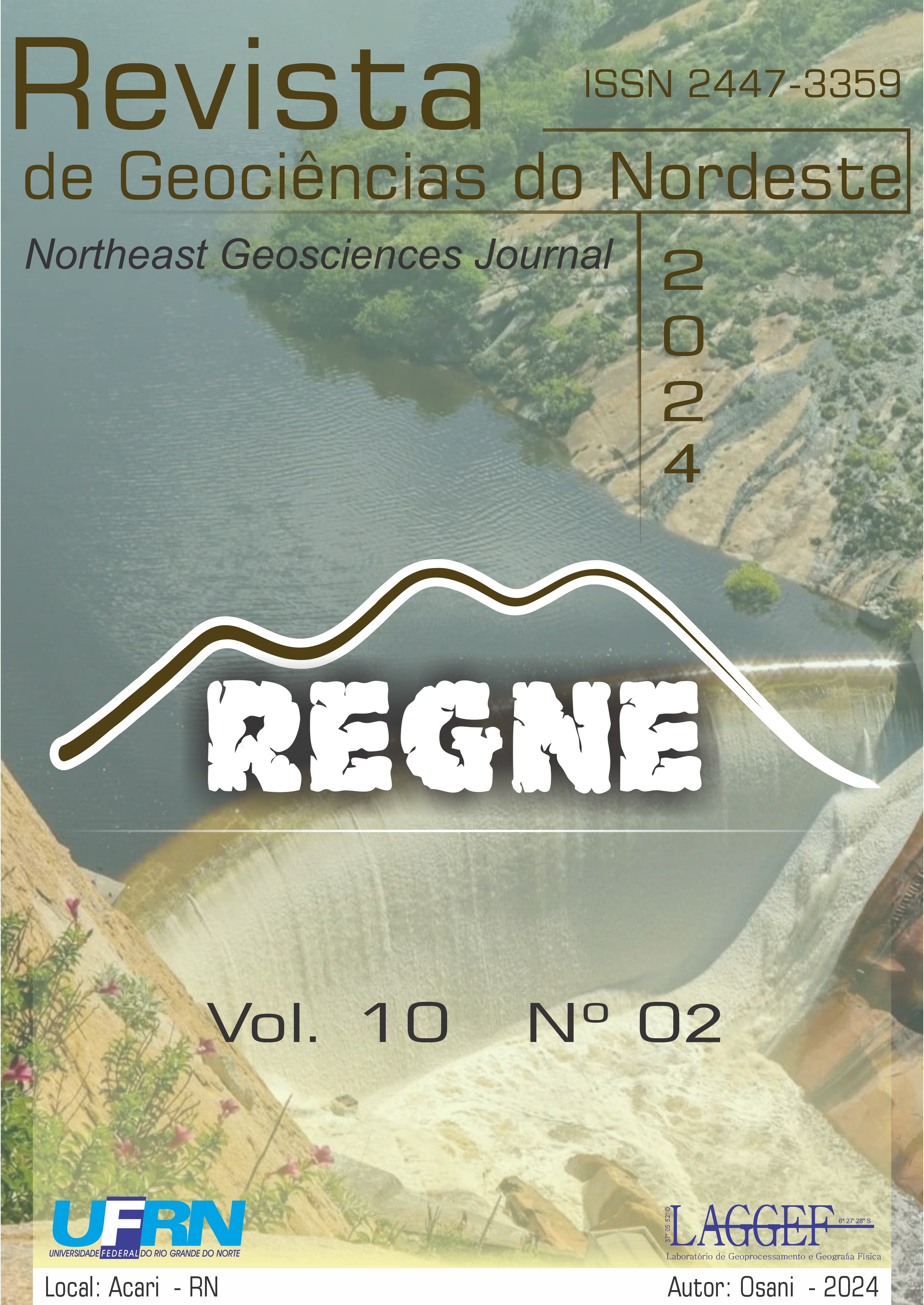Comportamento hidromecânico e processo de formação de fissuras em solo expansivo reforçado com fibras de coco verde.
Hydromechanical Behavior and Crack Formation Process in Expansive Soil Reinforced with Green Coconut Fibers
DOI:
https://doi.org/10.21680/2447-3359.2024v10n2ID36735Resumo
As fibras de coco verde descartadas em locais não adequados tornam-se passivo ambiental. Nesta pesquisa, a viabilidade de reutilizar fibras de coco como reforço em solo expansivo de Paulista/PE, é investigada através de experimentos laboratóriais, em amostra do solo compactado e em misturas com fibras de coco nas proporções em peso de 0,25%; 0,50%; 1,00% e 2,00%. Foram realizados os ensaios de: granulometria, limites de consistências, compressão, tensão de expansão, condutividade hidráulica e de análise de formação de fissuras por secagem. O potencial de expansão, com o acréscimo de fibras há redução na tensão de expansão do solo de 101,7 kPa do solo natural para 25,8 kPa para o solo com 1% de fibra de coco, uma redução de 74,63%. A resistência a tração por compressão diametral cresce 42% ao se adicionar 2% de fibra ao solo natural. Em relação à compressão simples, apresentou aumento na tensão máxima de 57,49%. A condutividade hidráulica não se altera, os valores não excedem a permeabilidade de (10-9 m/s). O fator de intensidade da fissura (CIF) diminui à medida que o teor de fibras aumenta. A inserção de fibras de coco verde ao solo expansivo melhora todas as características geotécnicas investigadas do solo expansivo.
Downloads
Downloads
Publicado
Como Citar
Edição
Seção
Licença
Copyright (c) 2024 Revista de Geociências do Nordeste

Este trabalho está licenciado sob uma licença Creative Commons Attribution 4.0 International License.


 Português (Brasil)
Português (Brasil) English
English








